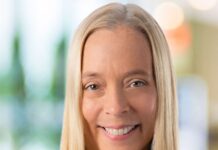Terry W. Goodwin has the distinction of being one of our first "Buy-Side Snapshots." Back in February of 1996, he was profiled by former editor Michael Scotti, just as Goodwin was beginning his first two-year term as chairman of the National Organization of Investment Professionals (NOIP).
A lot can change in three years especially on Wall Street and for that reason, Goodwin's career deserves a second look.
Goodwin is still with the NOIP. He's just entering the final year of his second two-year term as chairman.
But Goodwin is no longer with UBS Asset Management in New York, where he served as a managing director and head of equity trading in early 1996.
The 30-year trading veteran moved over to New York's Chase Asset Management that spring, joining the firm as it was reshaping trading operations in the wake of parent Chase Manhattan Corp.'s merger with Chemical Banking Corp.
The move to Chase Asset Management was a challenge for Goodwin, as he was asked to help structure the company's equity-trading operations for its managed assets, investment funds and private-banking accounts.
"Personally, it was an exciting move for me," Goodwin said. "It was a significant challenge to become a part of a new global organization. The firm was growing, and placing such an emphasis on trading. I felt we could move the desk to a whole new level."
Goodwin has seen institutions place an increased importance on buy-side trading over the last three years. He attributes that new emphasis not only to growth in assets under management, but also to the increased complexity of trading.
"The markets have changed so much in the last few years, it's very easy to make a wrong call. Institutions know that," Goodwin said. "Technology has made the business easier in some respects, but it has also made it harder. Decisions have to be made faster. We are all busier, and the pace has quickened. We don't get as many looks at a situation as we used to. Decisions have to be made immediately. If a desk makes the wrong call, it costs the firm."
Goodwin works with seven equity traders and close to 50 portfolio managers at Chase Asset Management. The firm has $360 billion in total assets, with $44 billion invested in equities.
His desk works with roughly 70 brokers regularly, but less than 20 brokers get the bulk of its business. Like most institutional traders over the last few years, Goodwin has reduced his broker list significantly. At UBS in 1996, his desk worked with 150 brokers regularly.
"We try to keep our list down. It's hard to be an important customer to 70 brokers, never mind 150," Goodwin said. "Firms that get the lion's share of our business have a major impact on our desk, whether it be in trading or research, or even with ideas."
Despite the proliferation of electronic trading in recent years, Goodwin believes trading still requires the development of key relationships.
Goodwin stresses to the traders on his desk the development of strong relationships with brokers. "You can't be an important account for 20 brokers," he said. "But if a trader can get maybe three brokers they feel genuinely comfortable with, brokers they could trade ideas with, then that's so beneficial to the desk. If the whole desk can do that, then we can have 20 brokers we really trust."
Ironically, as he began his first term as chairman of the NOIP in early 1996, he planned to discuss broker obligations at the organization's May meeting in Washington.
The NOIP is a 210-member organization made up of senior investment professionals. The NOIP holds meetings twice a year, in New York and in Washington, to discuss topics of primary importance to members, with panel discussions, information sessions and guest speakers.
"It's a great way to talk about issues we need to stay informed on," Goodwin said. "But it also lets us address issues we feel we can help impact and develop."
Goodwin is currently studying issues for discussion at next year's NOIP meetings.
According to Goodwin, the NOIP plans to concentrate on two topics in their May meeting in Washington computer problems associated with the Year 2000, and electronic communications networks on Wall Street.
With the meeting set in Washington, the NOIP expects senior officials from the Securities and Exchange Commission and the National Association of Securities Dealers to attend the session, along with some members of Congress.
"We expect a high-powered group for a good, informative session," Goodwin said. "These issues are of real concern for everyone in the industry, and we are trying to help develop them, because they have a profound effect on our business."




